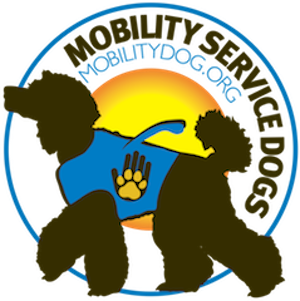How to Exercise Your Dog
A Woman Walking Her Poodle Outside
Canines, like humans, need exercise to maintain good health. And, as with humans, different dogs (and breeds) benefit from different forms of exercise. So what’s the best way to keep your dog healthy and active? Here are some thoughts.
Breed-Specific Differences
Since dogs have been bred for different jobs, from pulling sleds and herding sheep to sitting on laps, their exercise requirements also vary. Sporting and herding breeds like retrievers (Labrador and Golden, for instance), herding dogs (Border Collies, Australian Shepherds, as examples), and task-oriented dogs like German Shepherds have relatively high exercise needs. In contrast, toy and brachycephalic (short-nosed) breeds like Pugs, Bulldogs, and Shih Tzus do not require as much strenuous activity to stay in shape. Herding and working breeds need a job; exercise can fulfill this need. If they aren’t kept busy, they often find their own forms of amusing activity. That’s when flowers are dug up, fences tunneled under, and shoes destroyed.
Remember, individual animals may vary from generalized breed norms, so know your dog and her specific requirements.
Poodle Palooza Attendee and Mobility Dog (Courtesy: MobilityDog.org)
Age Matters
You might notice that your new puppy gets a frequent case of the “zoomies,” madly racing around the house before collapsing into a puppy pile. Instinctively, they seem to know how to exercise their developing bodies: short bursts of activity followed by rest. Long walks may tax a pup’s developing physiology, so brief walks and play sessions may be a better fit. Here again, you need to recognize the particular needs of the individual dog.
Your adult dog is probably better suited to long walks and more sustained exercise. However, if your pooch has a health condition such as hip dysplasia or respiratory weakness, check with your vet to ensure the exercise regime fits the dog’s physical capabilities.
Exercise is as important for senior pets as it is for aging people. You know your pet best and can determine how much exercise is needed to keep her fit and manage the weight issues that sometimes plague older dogs (and people!).
Forms of Exercise
With some imagination, introduce plenty of variety into your dog’s exercise program. Here are some ideas:
Hiking. If you like to take long nature walks on bucolic trails, take your dog with you. But make sure to control your dog’s range (a leash is best), and don’t let her crash through the brush unattended. Snakes, coyotes and even mountain lions may be hazards, so stay on well-marked, high-use paths.
Running. If running is part of your exercise regime, take Princess with you. Let her gradually build her distance, as you would, and ensure she’s well-hydrated. Again, be aware of any physical limitations. Bad hips and arthritis impose limits on a pet’s running time.
Fetch. Vary the routine by introducing different objects and different terrains.
Dog Sports. If you have an athletically talented dog, consider working with her on agility activities – obstacle courses or flying disk catching, for instance. The time required for training and competing will keep you both busy.
Poodle Attendees at the Poodle Palooza (Courtesy: MobilityDog.org)
Sniffing
Letting your dog sniff is one of the most engaging things you can do when exercising. Allowing her to exercise her nose on a walk multiplies the enrichment she’ll get from her time outdoors. Princess will appreciate the opportunity to:
Enjoy the mental simulation she gets from experiencing the world through her acute sense of smell.
Increase her understanding of the environment, taking in and processing information about other dogs in the area, potential food sources, and even possible threats.
Have social interactions with other local canine residents, engaging in real-time sniffing of the neighbors.
Sniffing engages the brain functions that sort and interpret the olfactory information a dog takes in through her nose. You’ll find that Princess is more fatigued by a sniff-heavy walk than by a simple jaunt around the block. Let her lead the walk, not so much by pulling you along but rather by taking the occasional detour off the sidewalk to smell something interesting. After all, dogs are social beings and want to catch up on their pee-mail messages from other pooches. Watch where she’s sticking her nose so she doesn’t injure herself, and don’t let her chow down on interesting but potentially hazardous tidbits she may detect along the way.
And be sure to feel good about giving your dog exercise opportunities. You’re benefitting both of you!



